Understanding the Hair Restoration Landscape in 2025
The hair restoration industry is experiencing dynamic growth and rapid technological change as we move through 2025. With rising prevalence of hair loss across genders and regions, combined with evolving consumer demands, the market is expanding both in size and sophistication. This report provides a comprehensive insight into the latest industry trends, demographic shifts, scientific advancements, and market projections, giving a detailed overview of how hair restoration is shaping the future of aesthetic medicine and consumer care.
Global Market Size and Growth Trajectory of Hair Restoration in 2025
What is the market size, growth, and future projections of the hair restoration industry in 2025?
In 2025, the global market for hair restoration is valued at roughly USD 6.91 to USD 7.52 billion, marking a significant increase from previous years. This growth is part of a rapid expansion trend that is expected to continue over the coming decade.
Looking ahead, the industry is forecasted to reach approximately USD 21.66 billion by 2029. The growth trajectory remains strong, with projections estimating the market will hit around USD 49.06 billion by 2034.
During this period, the compound annual growth rate (CAGR) is anticipated to range from 16.6% to over 20%, reflecting a robust rise driven by technological innovations, increasing awareness, and lifestyle factors.
Regionally, North America, Europe, and particularly the Asia-Pacific area are leading the growth surge. Countries such as India, South Korea, and Thailand have emerged as key hubs for medical tourism and advanced hair restoration services.
Factors fueling this expansion include the rising prevalence of hair loss conditions, a growing aesthetic consciousness among consumers, and ongoing improvements in procedures like FUE and stem cell therapies. These developments contribute to higher success rates and patient satisfaction, making hair restoration an increasingly popular choice worldwide.
Demographic Trends and Hair Loss Prevalence Worldwide in 2025
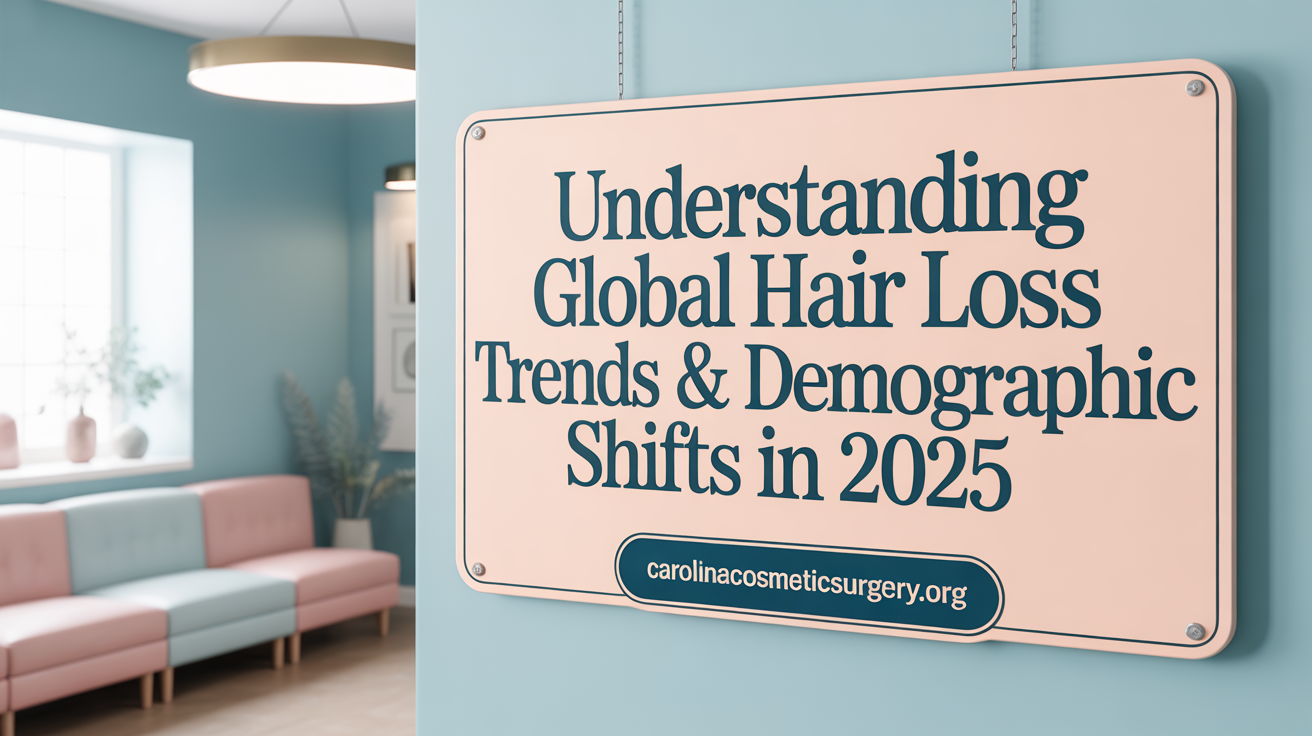
What are the current statistics and demographic trends related to hair loss and balding worldwide?
Hair loss remains a prevalent condition across the globe, affecting a substantial portion of the population. In 2025, approximately 35 million men and 21 million women are experiencing some form of hair thinning or baldness.
The distribution of hair loss varies by age, with notable increases as individuals grow older. By age 50, over half of the male population will face some degree of baldness, largely due to androgenetic alopecia, which accounts for about 95% of male hair loss cases. Women experience a different but also significant pattern: around 40% will notice considerable thinning or hair loss by their mid-40s or early 50s.
Regionally, the prevalence of male pattern baldness exhibits significant variation. European countries like Spain, Italy, and France stand out with some of the highest rates, each surpassing 44%, reflecting genetic and lifestyle influences.
Genetics play a pivotal role as the primary cause of hair loss, especially in men. Other factors such as hormonal changes, stress levels, and health conditions also contribute significantly. In Asia, for example, stress-related hair loss among women is increasingly reported, highlighting regional differences driven by lifestyle and environmental factors.
| Demographic Group | Approximate Prevalence | Primary Cause | Additional Notes |
|---|---|---|---|
| Men, age 50+ | Over 50% | Genetics (androgenetic alopecia) | Most common cause |
| Women, age 40+ | About 40% | Hormonal factors, stress | Increasing due to lifestyle factor |
| Men, age 18-29 | About 16% | Genetic predisposition | Early onset in some cases |
| Regions like Spain, Italy, France | Over 44% | Genetics, lifestyle | High regional rates |
Overall, growing awareness and advances in treatment options continue to shape the market, but demographic shifts ensure that hair loss remains a significant health and aesthetic concern worldwide.
Technological Innovations Driving Hair Restoration in 2025

What are the key trends and innovations in hair restoration for 2025?
The year 2025 marks a notable shift in hair restoration, driven by technological breakthroughs and evolving patient expectations. The industry continues to favor minimally invasive procedures, and FUE (Follicular Unit Extraction) remains the preferred choice, increasingly enhanced by advanced robotic systems.
Robotic systems such as ARTAS iX and Ke-Bot are transforming the landscape. These AI-powered devices utilize sophisticated imaging and pattern recognition, allowing for more precise graft extraction and placement. This results in natural-looking hairlines and improved patient satisfaction.
Emerging regenerative therapies also hold significant promise. Stem cell treatments and exosome-based therapies are gaining popularity as innovative options aimed at stimulating natural hair growth. Although still experimental, these techniques are showing encouraging results and appeal to a broader patient demographic seeking non-surgical solutions.
On the non-invasive side, treatments like platelet-rich plasma (PRP) therapy and low-level laser therapy (LLLT) are continuously improving. These modalities promote hair follicle health and growth, often used as maintenance therapies post-transplant or as standalone treatments.
Moreover, scalp micropigmentation is increasingly utilized to enhance aesthetic outcomes, offering pigmentation techniques that mimic natural hair stubble or density.
Technological developments are also expanding to cater to diverse patient needs. There’s greater focus on ethnic hair types and female patients, addressing specific styling and hair growth challenges. Additionally, growing interest exists in restoring facial hair, eyebrows, and treatment options for hair loss caused by aging or hormonal factors.
Overall, 2025’s advancements reflect a trend toward more precise, less invasive, and personalized hair restoration approaches, with ongoing research promising even more effective solutions in the near future.
Scientific Developments and Next-Generation Treatment Options
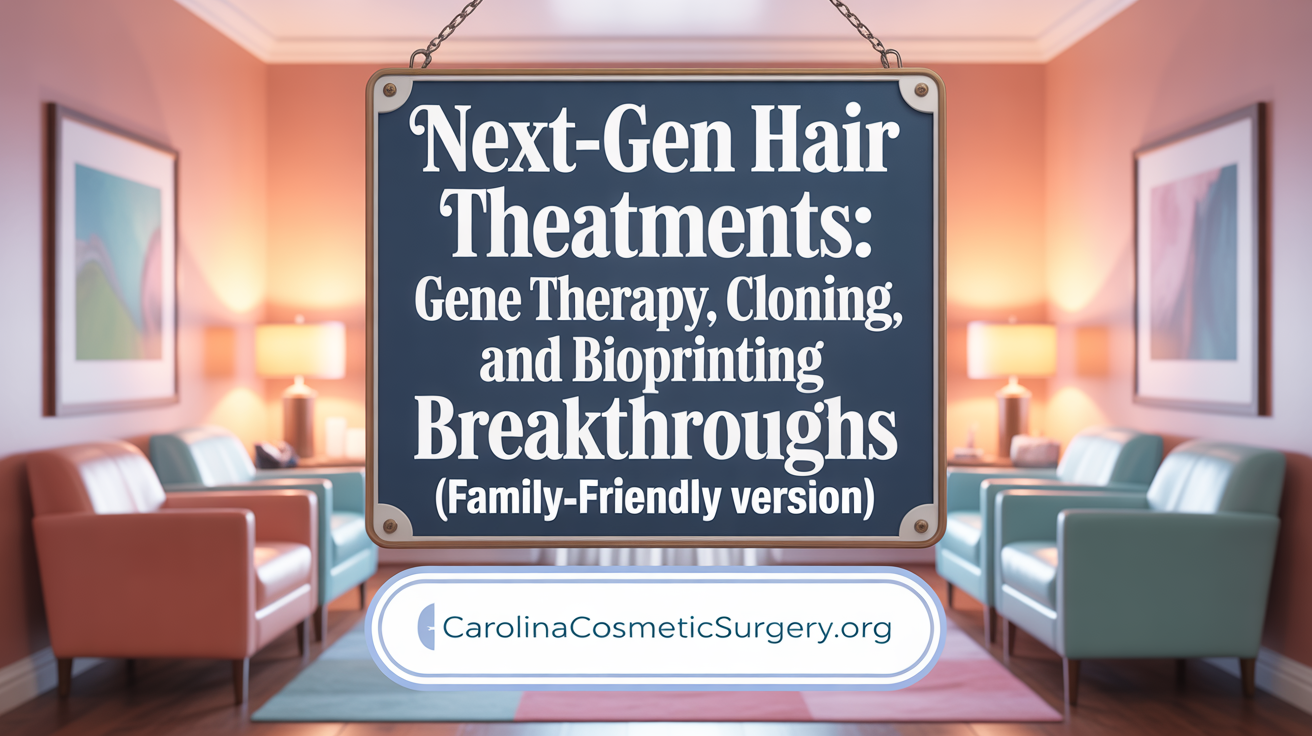
What are the recent technological advancements and scientific developments in hair restoration treatments for 2025?
In 2025, the field of hair restoration is experiencing rapid scientific progress driven by innovations in regenerative medicine and biotechnology. Researchers are making significant strides in developing hair cloning techniques, which aim to generate new hair follicles from a patient's own cellular material. These methods could eventually provide permanent solutions by replicating natural hair growth.
Gene therapy is also emerging as a promising avenue, targeting genetic factors responsible for hair loss. Such treatments aim to modify gene expression to prevent or reverse hair thinning, especially in hereditary cases like androgenetic alopecia.
Another groundbreaking development involves 3D bioprinting. This technology enables the creation of complex follicular structures layer by layer, opening possibilities for personalized and large-scale hair regeneration.
Refinement of existing treatments continues as well. Platelet-rich plasma (PRP) therapy and exosome injections are becoming more sophisticated, with enhanced protocols that boost the body's natural ability to promote hair growth and reduce scalp inflammation. These therapies are often combined with traditional procedures to improve outcomes.
Advances in robotic-assisted follicular unit extraction (FUE) include smaller, more precise instruments that minimize scarring and expedite recovery times. Robotics now facilitate highly accurate graft placement, improving both aesthetic results and patient satisfaction.
Looking ahead, future prospects revolve around cellular engineering and personalized medicine. Researchers envisage producing tailored treatments that leverage a person's own cells, enabling large-scale regeneration and potentially restoring hair permanently without surgery. These innovations suggest a transformative era for hair restoration, making permanent, natural-looking hair more accessible than ever.
Trends in Hair Transplant Procedures and Clinical Outcomes
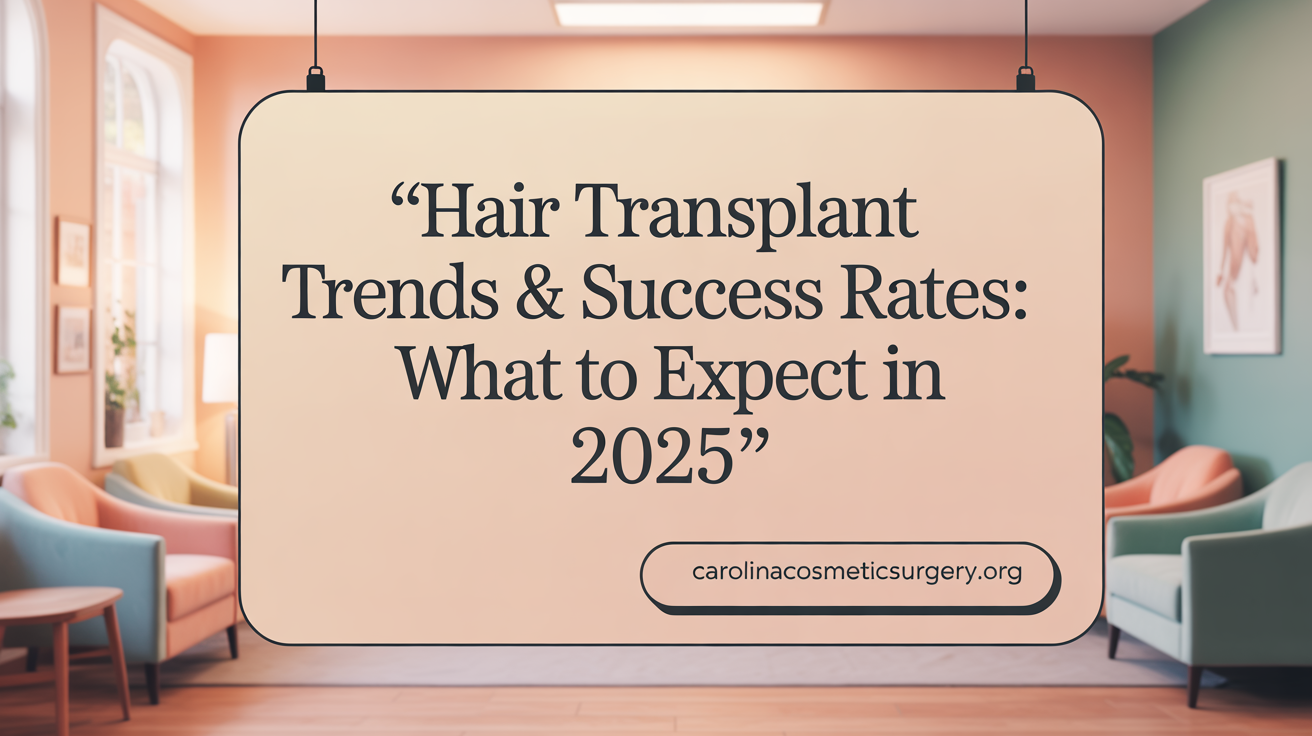
What are the trends and success rates for hair transplant procedures expected in 2025?
In 2025, the field of hair transplants continues to evolve with a strong preference for minimally invasive techniques. The Follicular Unit Extraction (FUE) method remains the most popular choice among patients and practitioners alike. It accounts for approximately 87% of all hair transplant procedures, largely due to its natural results and reduced recovery time.
Success rates for these procedures are notably high, with more than 97% of cases experiencing positive outcomes. Patients typically enjoy natural-looking hair growth and enhanced self-esteem post-treatment. These results are driven by technological advances such as robotic systems like ARTAS, which allow for precise follicle extraction, and improved surgical techniques.
Another significant trend is the proportion of patients requiring multiple sessions. About 42.7% of individuals undergo more than one procedure to achieve their desired hair density. This necessity highlights the personalized approach needed based on individual hair loss severity.
While historically dominated by men, the market is witnessing a rise in female patients, especially among younger women in their late 20s and early 30s. This demographic shift is influenced by hormonal changes, lifestyle factors, and greater awareness about hair restoration options. Overall, the combination of technological innovation and changing patient demographics is shaping a future with higher success rates and broader appeal.
Consumer Behavior and Demand Dynamics in Hair Restoration Market

What are the consumer behavior patterns and industry developments impacting the hair restoration market in 2025?
In 2025, the hair restoration industry is witnessing notable shifts driven by evolving consumer preferences and advancements in treatment options. The majority of patients now favor minimally invasive procedures such as Follicular Unit Extraction (FUE), which is preferred by over 87% of hair transplant candidates due to its less invasive nature and natural-looking results.
A significant segment of the market is composed of younger individuals in their late 20s and early 30s. This demographic is increasingly proactive about hair health and aesthetic appearance, often seeking early intervention. Additionally, there's a rising trend among women, who historically represented a smaller portion of the market but are now turning to hair restoration treatments for issues related to hormonal changes and genetics.
Social media platforms and digital channels play a crucial role in shaping consumer perceptions. Influencers, testimonials, and online before-and-after photos enhance transparency and set higher expectations for outcomes. Patients are more informed and demand safer, more effective, and personalized treatments.
Medical tourism is flourishing as a result, with patients traveling to countries like Turkey, India, and Thailand to access affordable, high-quality care without compromising results. Cost-effective options combined with technological advancements have made international travel for treatment quite popular.
Furthermore, there's an increasing preference for treatments aligned with wellness and natural health. Consumers are exploring organic formulations, stem cell therapies, and holistic approaches to scalp health, reflecting a desire for personalized and organic solutions.
Overall, the industry is responding to these demand patterns through technological innovations, increased customization, and expanding accessibility, which collectively drive the market's rapid growth toward projected values of over USD 49 billion by 2034.
Market Insights: Hair Growth Products and Hair Loss Treatment Innovations

How are hair growth products and hair loss treatments evolving in 2025, including new product launches?
The hair growth product market in 2025 is experiencing rapid growth and innovation, driven by consumer demand for sustainable, effective, and natural solutions. This year, we see a significant focus on formulations that prioritize organic and plant-based ingredients, aligning with the global trend toward holistic wellness. Industry leaders are regularly launching new products that cater to personalized needs, incorporating advanced technologies like biotechnology and regenerative medicine.
Traditional FDA-approved drugs such as minoxidil continue to be popular, yet they are now complemented by novel topical immune modulators and DHT inhibitors, offering more tailored options for different types of hair loss. Regenerative therapies are also becoming mainstream, with Platelet-Rich Plasma (PRP) treatments and biotech-derived actives gaining wider acceptance among clinics and consumers.
Scalp microbiome-focused products are emerging as a new frontier in hair care. These include probiotic-infused serums and professional treatments inspired by Japanese hair care trends, aiming to restore natural scalp health and promote healthier hair growth. Consumers are increasingly seeking anti-aging benefits within their hair care routines, prompting the launch of multi-use serums, revitalizing oils, and innovative scalp care devices.
Major companies continue to introduce cutting-edge solutions that address diverse concerns, from thinning to complete baldness. The integration of technology, such as smart scalp scanners and personalized treatment plans, underscores the industry's shift towards bespoke hair care that combines efficacy with an elevated user experience.
In summary, 2025 marks a year where scientific advancements, natural ingredients, and personalized solutions converge, shaping a dynamic landscape for hair growth products and treatments worldwide.
Regional Market Developments and Medical Tourism Impact

Growth in Asia-Pacific and Europe
The global hair transplant industry is experiencing rapid expansion in both the Asia-Pacific region and Europe. In 2023, Asia-Pacific generated over half of the market revenue, with countries like India, South Korea, and Thailand emerging as key hubs for hair restoration procedures. These regions benefit from increasing medical tourism, improved healthcare infrastructure, and growing awareness of hair loss treatments. Meanwhile, Europe continues to be a significant focus for the industry, driven by rising aesthetic consciousness and advanced technological adoption.
Emergence of key hubs like India and Turkey
India and Turkey have become prominent centers for hair transplantation due to their combination of high-quality clinics and attractive pricing. In 2020-2021, Turkey's average procedure cost was around USD 2,676, making it a popular destination for international clients seeking affordability without compromising quality. Similarly, India has evolved as a leading destination, leveraging skilled surgeons and modern clinics, further fueling regional expansion.
Affordability and procedure cost considerations
Cost is a primary driver attracting patients to medical tourism hubs. For instance, in the US, a hair transplant can cost up to USD 17,500, whereas Turkey offers comparable procedures for significantly less. This price disparity encourages cross-border patient flows, especially among those from North America and Western Europe seeking more affordable options. The variation in costs across countries influences strategic marketing for clinics aiming to attract international clients.
Cross-border patient flows and trends
Patients traveling abroad for hair restoration procedures is a growing trend. In 2020-2021, nearly 45.81% of Medihair clients were willing to travel overseas, underscoring the importance of regional hubs. The trend is fueled by the combination of cost-effectiveness, high success rates, and technological advancements like robotic systems and stem cell therapies available abroad. This cross-border flow of patients is expected to continue, further boosting the industry's growth and regional market overlap.
Economic Analysis: Cost Trends and Market Share by Geography

How do average costs vary by country?
The cost of hair transplants differs significantly around the world, influenced by factors such as healthcare infrastructure, economic conditions, and competition. For example, Turkey has become a popular destination for affordable procedures, with average prices around USD 2,676 in 2020-2021. In contrast, countries like Canada report much higher costs, reaching up to USD 17,500 in the same period.
How does pricing affect patient choices?
Price competitiveness plays a crucial role in where patients choose to undergo hair transplants. The appeal of lower costs in countries like Turkey and India attracts many international patients, driven by the desire to access quality care at a fraction of Western prices. This trend is contributing to a rise in medical tourism, broadening the global reach of clinics offering advanced techniques like FUE.
How do North America and Asia-Pacific markets compare?
North America, particularly the United States, remains a mature market with high costs—estimated at USD 5.66 billion in 2023 and expected to grow at a steady CAGR of 7.67%. Meanwhile, the Asia-Pacific region leads in market revenue, accounting for over 52% in 2023, propelled by countries such as India, South Korea, and Thailand thriving as key hubs for affordable, high-quality hair restoration services.
What impact does this have on the global market structure?
The regional disparities in costs and technological capabilities are shaping the industry landscape. Lower prices in Asia-Pacific have encouraged a flow of international patients seeking treatment abroad, while innovations like robotic transplants are more prevalent in developed regions. These dynamics foster a competitive environment where clinics compete on both price and quality, leading to increased technological adoption and expansion into emerging markets.
| Region | Average Cost Range (USD) | Market Share | Notable Features |
|---|---|---|---|
| North America | 10,000 - 20,000 | Growing at 7.67% CAGR | High-tech clinics, regulatory standards |
| Asia-Pacific | 2,500 - 5,000 | Over 52% revenue in 2023 | Cost-effective, rapid adoption of new tech |
| Europe | 8,000 - 15,000 | Significant due to medical tourism | Skilled surgeons, growing awareness |
This geographic cost variation influences global industry growth, with regions competing to attract patients through a combination of pricing and technological advancement.
Psychosocial Benefits and Patient Satisfaction in Hair Restoration

How does hair restoration improve self-esteem and confidence?
Many patients find that restoring hair significantly boosts their self-esteem and confidence. Thinning hair or bald patches often lead to self-consciousness, affecting social interactions and personal image. Successful hair transplants provide a natural appearance, helping individuals feel more attractive and comfortable in social settings. This change often translates into a more positive outlook and improved mental health.
What are the satisfaction rates among patients after hair transplant procedures?
Reports indicate high success and satisfaction levels, with many patients experiencing noticeable improvements in their appearance. Surveys reveal that over 80% of hair transplant patients are satisfied with their results, citing increased self-confidence and happier social lives. Technological advances like FUE (Follicular Unit Extraction) contribute to this satisfaction by offering minimally invasive procedures with natural-looking outcomes.
What is the psychological impact of a successful hair restoration?
The psychological benefits extend beyond aesthetics. Patients often report reduced anxiety, depression, and social withdrawal after their procedures. Feeling better about one's appearance can lead to improved personal relationships and better occupational performance. The transformation often helps individuals overcome long-standing insecurities associated with hair loss.
Are there patient testimonials or survey data supporting these benefits?
Yes, numerous testimonials highlight positive experiences, emphasizing life-changing impacts. Surveys from industry reports reveal that patients attribute their renewed self-esteem to successful procedures, with many stating they feel more youthful and energetic. This psychological uplift not only improves individual well-being but also encourages more people to consider hair restoration as a viable solution.
Integration of AI and Robotics in Diagnosis and Procedure Planning
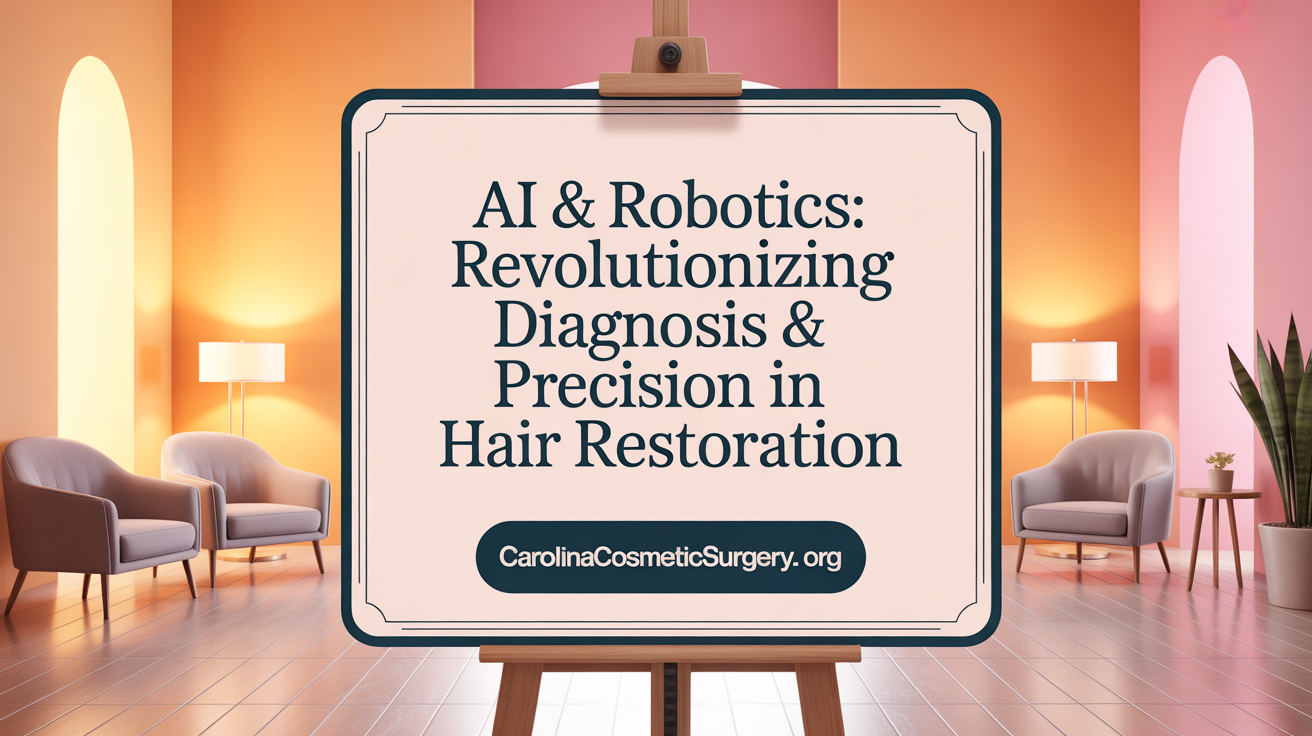
How are AI-powered imaging and planning tools transforming hair restoration?
The integration of artificial intelligence (AI) into hair restoration is revolutionizing diagnosis and treatment planning. Advanced imaging tools powered by AI can analyze scalp images with high precision, helping doctors determine the extent of hair loss, density, and the ideal donor sites. This allows for more accurate treatment plans tailored to each individual, improving the likelihood of successful outcomes.
These AI-driven systems can also simulate post-procedure results, giving patients a visualization of expected hair density and style. This enhances patient satisfaction by setting realistic expectations and facilitating informed decision-making.
What are the benefits of robotic-assisted FUE techniques?
Robotic systems like ARTAS and Ke-Bot have become increasingly popular, especially in 2025, for performing Follicular Unit Extraction (FUE). These robots assist surgeons by providing precise follicle extraction, minimizing human error, and ensuring consistency.
Robots can precisely identify the best follicular units for extraction, reducing trauma to the scalp and increasing graft survival rates. Additionally, robotic-assisted procedures are often less invasive, leading to quicker recovery times and more natural-looking results.
How is machine learning improving outcome prediction?
Machine learning algorithms analyze vast datasets from past procedures, patient characteristics, and outcomes to predict the success of hair restoration treatments. These models help clinicians identify which techniques or combinations will yield the best aesthetic results for individual patients.
Predictive insights from AI improve planning by anticipating potential complications and adjusting procedures accordingly. This technological advancement empowers surgeons with data-driven recommendations, increasing the overall success rate and patient confidence.
In what ways are these technologies enhancing safety and reducing operation time?
AI and robotics significantly improve the safety profile of hair transplants by reducing manual errors and ensuring precise movements during procedures. Robotic systems can work faster than manual methods, decreasing operation times by optimizing follicle extraction and placement.
Shorter procedures not only reduce patient discomfort but also lower the risk of complications such as infection or graft damage. Moreover, enhanced precision leads to fewer follow-up interventions, contributing to higher patient satisfaction.
How do these advancements shape the future of hair restoration?
The continuous evolution of AI and robotics is setting new standards for efficiency, safety, and aesthetic outcomes in hair restoration. As these technologies become more sophisticated and accessible, the industry is moving toward minimally invasive, highly personalized treatments. Future developments might include even more autonomous systems and integrated regenerative therapies, paving the way for groundbreaking progress in restoring hair with natural results.
Holistic Scalp Care Trends and their Role in Hair Restoration

What are the latest scalp care trends and their relationship to overall hair restoration practices in 2025?
In 2025, scalp care has evolved into a sophisticated, skincare-inspired practice that emphasizes more than just cleanliness. Modern trends focus on improving the health of the scalp through exfoliation, barrier repair, and microbiome balance. This approach draws heavily from advanced skincare principles, integrating ingredients traditionally used in facial care.
One of the most significant innovations is the focus on the scalp microbiome. Treatments now include probiotics, prebiotics, and postbiotics designed to foster a healthy microbial environment. Maintaining this balance not only enhances scalp health but also creates an optimal foundation for hair growth.
Personalization plays a central role. AI diagnostics enable tailored treatments that match individual scalp conditions precisely. By analyzing scalp data, these systems recommend specific formulations, ensuring that each patient receives a highly customized regimen.
Products are now incorporating clinical-grade active ingredients like salicylic acid for gentle exfoliation, niacinamide for barrier repair, and peptides to stimulate hair follicles. These ingredients are often delivered through multi-use serums and treatments designed for daily application.
Consumer preferences are also shifting toward eco-friendly options. Refillable containers, waterless formulations, and sustainable packaging are increasingly favored by a conscious clientele.
This holistic approach creates a seamless connection between skincare and hair care, recognizing that healthy scalp conditions are essential for successful hair restoration. By addressing scalp health comprehensively, these trends boost the effectiveness of hair transplants and non-surgical treatments alike.
Market Dynamics and Competitive Strategies Among Key Industry Players

Major company profiles
Leading companies in the hair restoration industry include global giants such as L'Oreal, Unilever, Merck, and Johnson & Johnson. These firms have established a strong presence through extensive product portfolios and innovative research. Additionally, regional players and emerging biotech firms are gaining traction by leveraging novel regenerative treatments and advanced technology.
Competitive positioning and SWOT insights
The landscape is highly competitive, with dominant players investing heavily in R&D to maintain their edge. For example, companies focusing on minimally invasive procedures like FUE are positioned favorably due to high patient demand. Strengths across the industry include technological expertise, a broad product lineup, and brand recognition. Conversely, challenges such as regulatory hurdles and high procedural costs are notable weaknesses.
Product portfolio diversification
A key factor in maintaining competitiveness is diversification. Companies are expanding beyond traditional surgical procedures to include non-invasive options, such as PRP therapy, stem cell treatments, and topical medications. This variety caters to different patient preferences and increases market reach. For example, robotic systems like ARTAS and Ke-Bot exemplify high-tech offerings that streamline procedures and improve outcomes.
Investment in R&D and innovation pipelines
Innovation drives industry growth. Major firms are investing in biotech and regenerative medicine to develop cutting-edge therapies. These investments are crucial for offering effective solutions with higher success rates and sustained results. Emerging innovations such as robotic transplants and stem cell therapies are set to shape the future landscape, making treatment more accessible and less invasive.
Market competition overview
The competitive landscape is evolving rapidly, with regional markets in Asia-Pacific and Europe experiencing substantial growth due to increased awareness and medical tourism. As player strategies diversify—ranging from technological advancements to strategic partnerships—market leaders are expected to sustain their dominance.
| Company | Focus Area | Notable Innovation | Market Share Estimate | Comments |
|---|---|---|---|---|
| L'Oreal | Topical treatments, products | Advanced skincare for hair regrowth | High | Leading global cosmetic brand |
| Merck | Pharmaceuticals, regenerative | Stem cell therapy research | Moderate | Focus on biotech solutions |
| Johnson & J J. | Surgical devices, minimally invasive | Robotic systems like ARTAS | Growing | Investing in tech-focused innovations |
| Regional Players | Non-surgical therapies & clinics | Laser therapies, PRP, new formulations | Varies | Expanding in emerging markets |
This dynamic environment highlights how continuous investment in innovation, strategic diversification, and regional expansion are critical for companies aiming to lead in the rapidly growing hair restoration market.
Hair Restoration Procedure Volume and Patient Arrival Trends
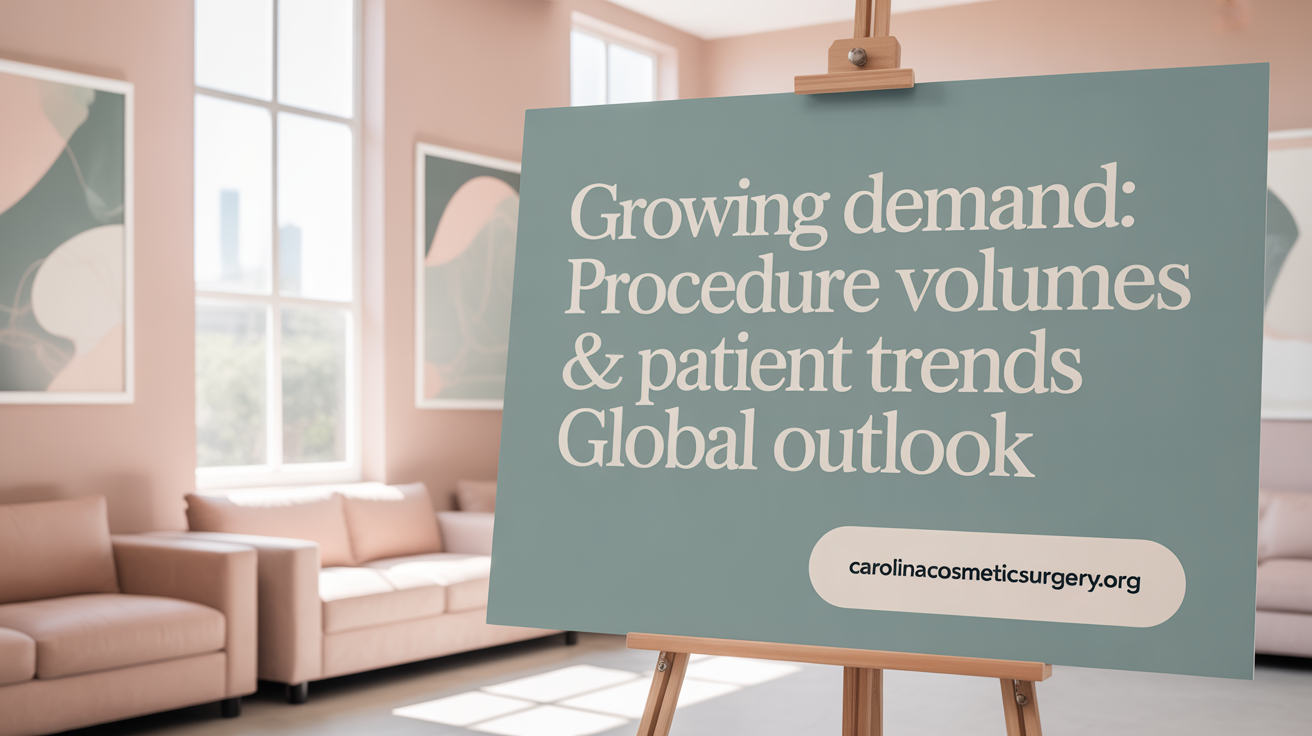
Increase in surgical and non-surgical procedures
The global demand for hair restoration treatments continues to rise, driven by technological advancements and growing awareness. Both surgical options like hair transplants and non-surgical therapies such as PRP and stem cell treatments are seeing increased popularity.
Annual procedure counts from 2006 to 2019 and beyond
Since 2006, the number of surgical hair restoration procedures has shown remarkable growth. In 2006, approximately 225,779 procedures were performed worldwide. This number climbed steadily, reaching over 735,000 in 2019, illustrating a robust increase in both supply and consumer interest.
Despite minor fluctuations, the volume of procedures worldwide remained high and continued to grow into 2020 and beyond, with projections indicating even larger numbers by 2025. The demand is particularly strong in regions like Asia-Pacific and North America, where medical tourism and advanced tech accessibility fuel growth.
Patient demographics and treatment motives
The average patient profile has shifted over recent years. Younger adults in their late 20s and early 30s now represent a significant portion of those seeking hair restoration, reflecting increased concerns about early hair loss. Men still account for the majority of treatments, approximately 87.3% in 2025. However, the number of women seeking solutions is growing, motivated by factors such as hormonal changes and increased aesthetic awareness.
Most patients seek treatment to improve self-esteem and confidence, with about 42.7% requiring multiple procedures to reach their desired density. The typical motivation revolves around combating male pattern baldness, which remains the leading cause of hair loss.
Global trends in procedure adoption
Market trends demonstrate a preference for minimally invasive techniques like Follicular Unit Extraction (FUE), which accounted for roughly 87.3% of procedures in 2025. With advancements in robotic systems and less invasive methods, the procedure volume is expected to continue rising.
The global industry has also responded by increasing the availability of comprehensive treatment plans, including surgical, pharmacological, and regenerative therapies. Regions like Europe and Asia-Pacific are experiencing rapid growth, driven by increased awareness, affordability, and medical tourism. Overall, the hair restoration industry is set to sustain its trajectory of expansion, reaching an estimated volume of over 1 million procedures annually by 2025.
Male vs Female Hair Loss Treatment Market Share and Growth

Gender-based treatment statistics
The global hair loss treatment market shows distinct patterns when comparing male and female patients. Approximately 85% of men and 33% of women experience some form of hair loss during their lifetime. Male pattern baldness, known as androgenetic alopecia, accounts for about 95% of male hair loss cases, with a significant portion of men noticing thinning or balding by age 35. Conversely, women start experiencing hair loss typically later and at a lower prevalence, with around 40% of women facing some degree of hair thinning by age 50.
Rising female patient share
While historically the market has been predominantly male-focused, recent trends indicate a rising number of women seeking hair restoration. In 2024, about 33% of patients undergoing treatment are female, reflecting increased awareness and willingness among women to pursue solutions.
Drivers of female hair loss treatment demand
The increase in female patients can be attributed to several factors. Hormonal imbalances, stress, and lifestyle factors contribute to hair thinning in women. Moreover, societal shifts towards beauty and self-esteem have played a significant role, encouraging women to seek cosmetic procedures more proactively. Advances in treatment options, including minimally invasive procedures like FUE and regenerative therapies such as stem cell treatments, have also made hair restoration more accessible and appealing to women.
Market segmentation by gender
The treatment market remains largely segmented by gender. Men continue to dominate with approximately 74% of procedures, primarily due to higher prevalence rates of male pattern baldness. However, the female segment is expanding, especially with treatments tailored to female hair loss conditions. This shift underscores a growing recognition of different hair loss causes and the need for specialized solutions for women.
| Segment | Percentage of Treatments | Notes |
|---|---|---|
| Male Treatments | 74% | Majorly driven by male pattern baldness |
| Female Treatments | 26% | Increasing, driven by hormonal and lifestyle factors |
| Age Group (Men) | Over 65% by age 35 | Significant hair loss development in younger men |
| Age Group (Women) | 40% experience hair loss by age 50 | Usually later onset compared to men |
The ongoing growth in female-focused treatments demonstrates a broadening market and highlights the importance of customized solutions for diverse patient needs.
Future Outlook: Forecasting Hair Restoration Industry Trends Post-2025

Predicted technological breakthroughs
The hair restoration industry is poised for significant technological innovations in the coming years. Cutting-edge advancements such as robotic transplants—exemplified by systems like ARTAS and Ke-Bot—are enhancing precision and reducing procedure times. Non-surgical treatments like platelet-rich plasma (PRP) therapy and stem cell therapy are gaining momentum, offering less invasive options with promising results. Additionally, regenerative medicine innovations, including biotech approaches, are expected to further improve success rates and natural outcomes.
Market expansion drivers
Several factors are fueling the rapid growth of the hair restoration market beyond 2025. Increasing awareness about hair loss treatments and the availability of advanced procedures are attracting a broader demographic. The rise of medical tourism, especially in regions like Asia-Pacific, supports accessibility and affordability, further expanding the market. Younger individuals in their late 20s and early 30s are seeking early intervention to prevent progression, while the increasing involvement of women—driven by hormonal imbalances and societal shifts—broadens the patient base. Additionally, the rising prevalence of hair loss related to genetics and lifestyle factors continues to sustain demand.
Emerging patient demographic segments
Historically dominated by older men, the patient profile is diversifying. Currently, around 42.7% of patients require multiple procedures to attain desired density, highlighting continued demand for comprehensive treatments. Notably, younger adults in their late 20s and early 30s are increasingly seeking early intervention, reflecting a shift towards preventive care. Women now represent a growing segment, with about 40% of women over age 50 experiencing some hair loss. These demographic shifts are driven by heightened awareness and the cultural emphasis on appearance.
Long-term industry challenges and opportunities
Despite optimistic growth projections, the industry faces challenges such as regulatory hurdles, high costs of cutting-edge technologies, and variability in patient outcomes. Addressing these can lead to broader acceptance and improved standards of care. Opportunities also lie in developing personalized treatments, expanding into emerging markets, and integrating regenerative medicine techniques. As competition intensifies, innovation and quality assurance will be crucial for companies aiming to capture market share.
| Aspect | Future Trend | Impact |
|---|---|---|
| Technology | Robotic systems, stem cell therapy | Greater procedure accuracy, less invasive treatments |
| Market Drivers | Awareness growth, medical tourism | Expanded customer base, increased global revenue |
| Patient Demographics | Younger individuals, women | Diversified demand, early interventions |
| Challenges | Regulatory, cost barriers | Need for efficient, affordable solutions |
| Opportunities | Personalized medicine, emerging markets | Market expansion, innovation fuels growth |
Navigating the Expanding Horizon of Hair Restoration
The hair restoration industry in 2025 stands at a pivotal moment marked by remarkable growth, technological breakthroughs, and evolving consumer expectations. With an expanding market valued in the billions, innovations such as advanced robotic systems, regenerative medicine, and personalized scalp care are reshaping treatment paradigms. The shifting demographics, including increasing participation by younger adults and women, alongside the global rise of medical tourism, signify a broadening audience for hair restoration solutions. As science continues to uncover novel therapies and technologies, the industry’s future promises even greater possibilities for addressing hair loss effectively and holistically. Stakeholders and consumers alike can anticipate a vibrant, innovative market landscape redefining beauty and confidence worldwide.
References
- Hair Transplant Statistics In 2025: What's Changing?
- Hair Loss Statistics in 2025: Key Insights for Men & Women
- Baldness Statistics and Facts (2025) - Market.us Media
- Hair Loss Statistics 2025 (Types, Treatments...) - Medihair
- Global Hair Transplant Market to Hit USD 110.06 Billion by
- Hair Transplant Statistics and Facts (2025) - Market.us Media
- Global Hair Loss Treatment Products Market Demand Forecasting ...
- Hair Transplant Industry Trends In 2025: Growth, Demand & What ...
- Hair Restoration Market Report 2025 (Global Edition)
- Hair Loss Treatment Products Market Size - Global Growth Insights
